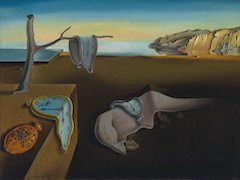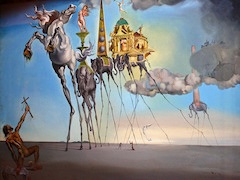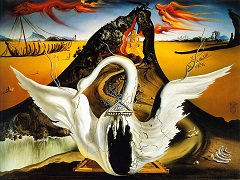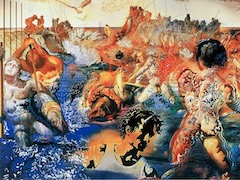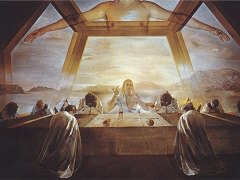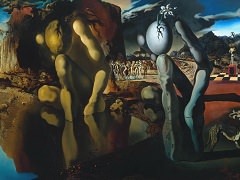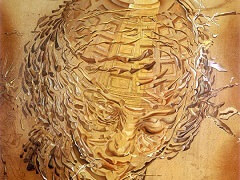The Broken Bridge and the Dream, 1945 by Salvador Dali
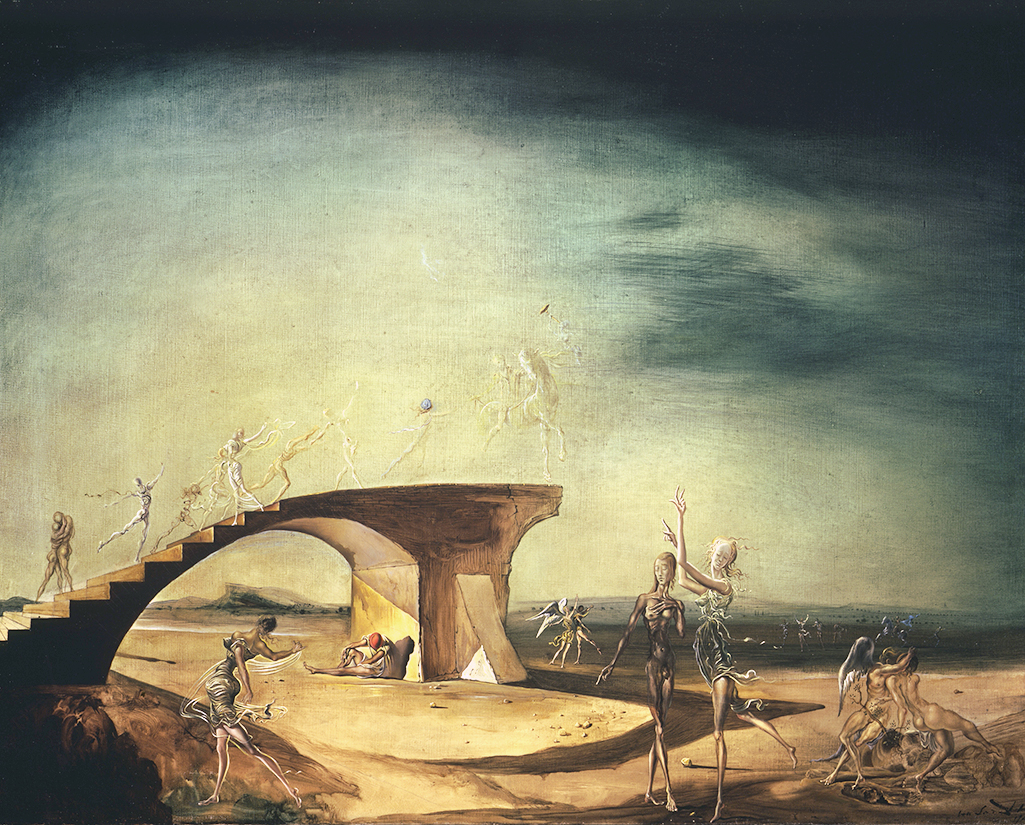
Classical motifs had, in fact, entered Dali's work in 1937 and 1938, when the artist sojourned in Italy. Dali's new emphasis on the values of order, hierarchy, and synthesis is, however, characteristic of his postwar production, during which time his creative energies were divided between painting and a range of commercial endeavors, including book illustration, advertising projects, costume and set design, and film. Dali executed several loose, panoramic landscapes at this time which have the effect of stage sets. The Broken Bridge and the Dream are particularly "theatrical," as the figures are not so much integrated with their surroundings as they appear to perform before an elaborate backdrop of classical ruins and architectural props.
Typical of his postwar production Dali has once again borrowed stock motifs from early surrealist paintings. The arched stairway in The Broken Bridge and the Dream recalls the imagery of steep stairs that functioned as a Freudian allusion to sexual intercourse in The First Days of Spring. It would, however, be incorrect to dismiss these later landscapes as hackneyed copies or pastiches of Dali's early work, an accusation that has often been made. The fact that one is invited to read Dali's later imagery through a familiar lexicon of symbols and narrative situations suggests, rather, that these paintings function at the level of allegory. This hypothesis is in part confirmed by the presence of related imagery in other works of this period with a patently allegorical character.

